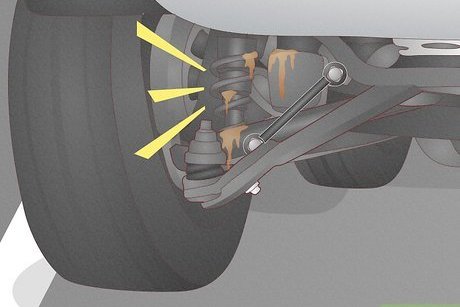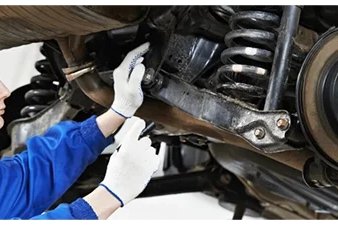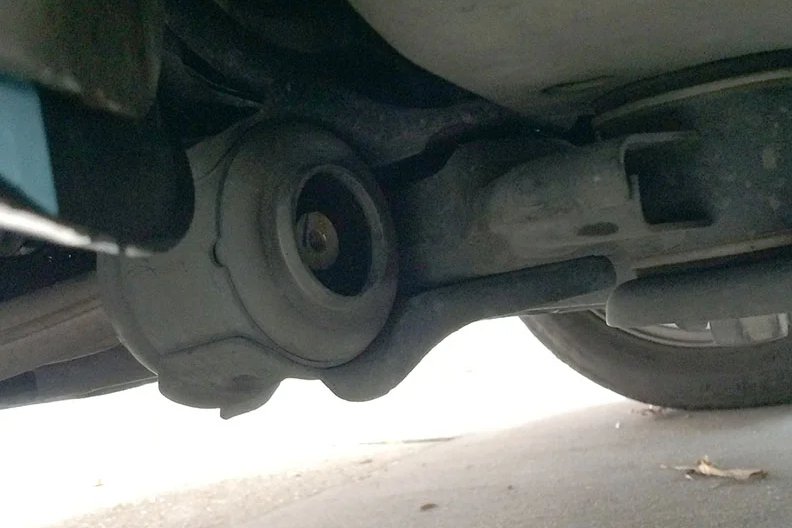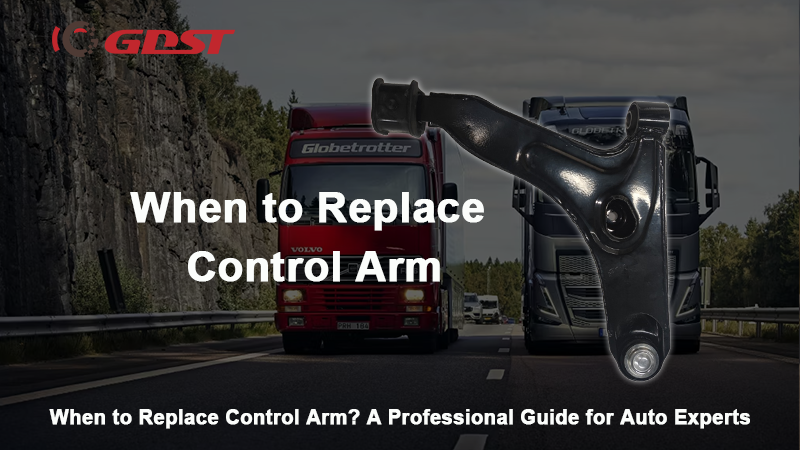Many car owners have no idea when a control arm needs replacement. They may hear a strange sound or feel the steering is not right, but they don’t connect it with the suspension. As a professional in the auto parts or repair field, you should be able to explain this clearly. Knowing when to replace control arm not only keeps cars safe but also builds trust with your customers.
The right time to replace a control arm is when you notice unusual noise, steering problems, vibration, or visible cracks and rust. A safe rule is to inspect every 30,000–50,000 miles. If wear or damage is confirmed, replacement should be done quickly to avoid risks and extra repair costs.
When to Replace Control Arm
Control arms are a key part of the suspension system. They connect the wheel hub to the body frame and keep the tires in the correct position while driving. If they fail, handling becomes unsafe. Replacement is not something to guess—it should be based on clear signs. From noise to professional inspection, here are the main angles you can use to judge.
Abnormal Noise

Noise is usually the first and most obvious sign that a control arm may need replacement. Customers often describe a knocking, clunking, or rattling sound when driving over bumps, turning corners, or braking.
This sound often comes from worn bushings or a loose ball joint in the control arm. Bushings are made of rubber, and over time, they dry out, crack, or separate from the metal. When that happens, the control arm can no longer hold the wheel firmly.
As a professional, you can explain that ignoring this sound is risky. A small knock today can become a bigger problem tomorrow, leading to suspension damage or even loss of control at high speed. A brief test drive with the customer is usually sufficient to confirm whether the noise is coming from the control arm.
Driving and Handling Problems

Another clear signal is a change in how the car drives. Customers may say:
- The steering feels loose.
- The car pulls to one side.
- The wheel shakes when driving at higher speeds.
These symptoms happen because the control arm affects wheel alignment. If the arm is bent or the bushings are worn, the wheel angle changes. That not only makes the car harder to control but also puts extra stress on the tires. Uneven tire wear is often a clue that the control arm is not working correctly.
When explaining to customers, you can use simple comparisons. A car with a weak control arm is like a person walking with a weak ankle. The balance is lost, and the risk of falling is higher. This makes it easy for them to understand why replacement is important.
Visual Inspection

Not all control arm issues are hidden. Some can be spotted during a simple inspection without even driving the car. This is why visual checks are a key part of regular service.
When looking at the control arm, focus on these points:
- Cracks in the metal: Even small cracks can multiply under stress. A cracked arm may hold for a while, but it can suddenly fail. Always recommend replacement if cracks are visible.
- Rust and corrosion: Surface rust is normal over time, but heavy rust that eats into the metal weakens the arm. In regions with road salt or high humidity, rust damage is a common occurrence. If rust has removed too much material, replacement is the only safe option.
- Bushings condition: Bushings connect the control arm to the frame. Look for rubber that is cracked, split, or detached. If the bushing is loose or missing, the arm cannot hold the wheel in place correctly.
- Ball joint wear: On some cars, the ball joint is part of the control arm. If there is play or the protective boot is torn, dirt and water will enter, leading to fast wear.
When inspecting, it helps to compare the left and right sides. If one arm shows obvious wear while the other looks fine, explain that suspension parts usually age together, so replacing both sides is often best. You can help customers identify obvious problems, such as cracks, bends, or wear on control arm bushings, which also helps customers understand the issues and trust your recommendations.
Professional Check

Even if no clear signs are visible, control arms should still be checked on a regular schedule. A good rule is to inspect every 30,000–50,000 miles. In real life, the lifespan depends on driving style and environment:
- City driving on smooth roads usually means a longer life.
- Off-road or rough roads shorten the life of control arms.
- Heavy loads and towing also increase wear.
Some control arms may last 150,000 miles or more, but waiting for failure is not safe. Explaining this to customers shows you care about prevention, not just fixing problems after they happen.
Why Timely Replacement Matters
Some car owners may ask, “Can I wait a bit longer?” The truth is, waiting often leads to higher costs and bigger risks.
- A damaged control arm changes the wheel angle, causing uneven tire wear. Tires wear out faster, which costs more money.
- Stress on the suspension grows, leading to extra repairs of shocks, struts, or ball joints.
- Most importantly, it increases safety risks. Losing control of the car due to a failed suspension part can cause serious accidents.
By stressing these points, you show that replacement is not just about parts—it is about keeping people safe and saving money in the long run.
Simple Replacement Tips
When replacement is needed, here are a few points professionals should keep in mind:
- Replace in pairs when possible. If one side is worn, the other side may soon follow. Replacing both helps keep the balance.
- Check bushings and ball joints. If only the bushings are damaged, replacing just them may be enough. But if the arm is bent, cracked, or rusty, the whole control arm must be replaced. This is why keywords like control arm bushing are important for SEO and for customer education.
- Cost and time. Customers often search for the control arm car replacement cost. Parts vary by model, and labor is usually 1–2 hours per arm. Always mention that wheel alignment is needed afterward.
- DIY or professional work? Many ask, Can I replace a control arm myself? While it is possible for skilled DIYers, most car owners do not have the right tools or safety knowledge. Professional replacement is always safer and more reliable.
Conclusion
Knowing when to replace control arms is part of being a reliable pro. Pay attention to noises, changes in handling, or signs you can see during an inspection. Catching the problem early means less cost, safer driving, and customers who trust you because they know you’re looking out for them.






